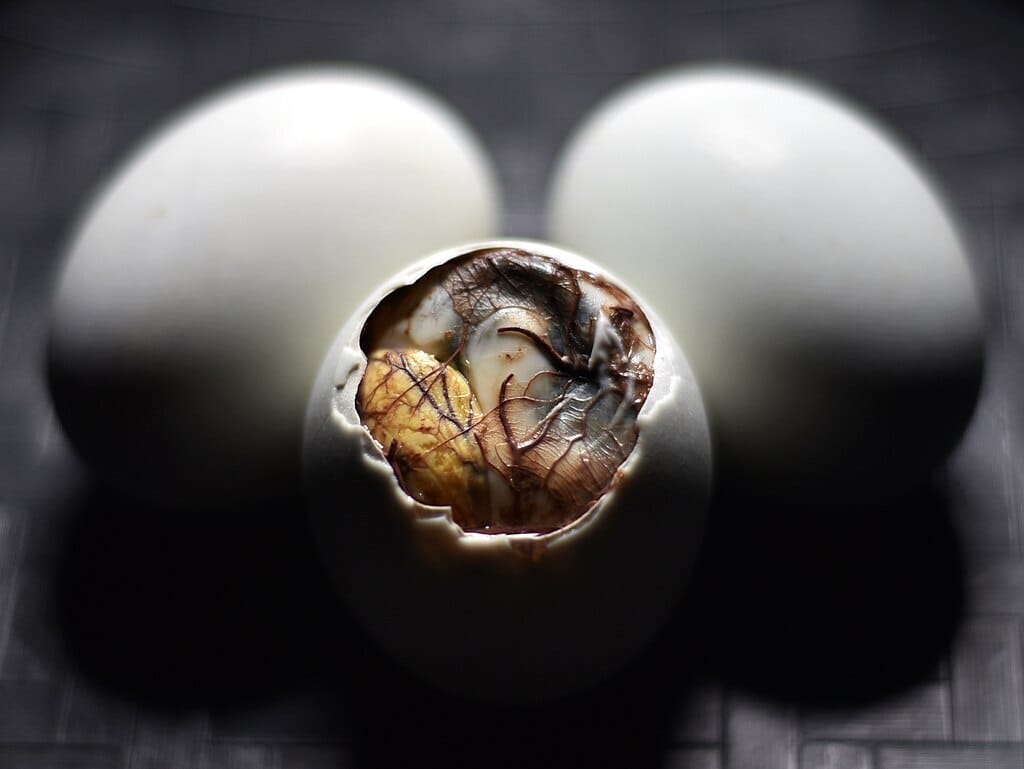- Finding Utopia Newsletter
- Posts
- Top Palawan Hotels & Resorts — Where Paradise Meets Hospitality
Top Palawan Hotels & Resorts — Where Paradise Meets Hospitality
Stories: Top Palawan Hotels & Resorts — Where Paradise Meets Hospitality; Balut — More Than a Street Snack: Taste, Tradition & Controversy

Hello and Mabuhay!
Welcome to Finding Utopia — your trusted guide to exploring the wonders of the Philippines and beyond.
In this edition, we bring you inspiring stories and essential travel insights to fuel your next adventure:
Top Palawan Hotels & Resorts — Where Paradise Meets Hospitality
Balut — More Than a Street Snack: Taste, Tradition & Controversy
Wherever you're dreaming of going next, we're here to guide you closer to your utopia.
Enjoy the read!
— The Finding Utopia Team
Top Palawan Hotels & Resorts — Where Paradise Meets Hospitality

If the island escape of your dreams features powder‐white sand, limestone cliffs, turquoise sea and luxury woven into nature, then the resorts of Palawan are calling. Our latest blog edition highlights how choosing the right hotel or resort here can turn your itinerary into a true journey of comfort, style and island immersion.
What We Looked for in the Top Picks
Setting & Access: The best stays in Palawan combine dramatic landscapes (island beaches, lagoons, jungle edge) with accessible travel—so you spend less time fighting logistics and more time resting in beauty.
Design & Service: From over-water villas to rustic-lux huts, premium resorts embrace local materials, culture-inflected design and service that feels personal, not industrial.
Sustainability & Experience: Top resorts are increasingly judged by how well they preserve nature, engage communities and deliver activities (snorkelling, island-hopping, culture walks) that tie you to place.
Highlight Resorts Worth Your Consideration
Amanpulo — Located on Pamalican Island in northern Palawan, Amanpulo combines ultra-luxury with seclusion. The very name suggests “peaceful island.”
El Nido Resorts Pangulasian Island — A standout for couples or premium travellers seeking villas by Bacuit Bay.
Princesa Garden Island Resort & Spa — Higher-volume luxury with strong family appeal, in a scenic but more accessible location.
Seda Lio Resort — A modern, smart-design option near El Nido’s Lio Beach area, offering convenience plus style.
How to Choose the Right Resort for You
Romantic/Secluded Escape: Go for Amanpulo or Pangulasian if you want ultra-privacy, high-end amenities and a resort-as-destination model.
Family-Friendly with Activities: Resorts like Princesa Garden strike a balance between luxury and adaptability for families or groups.
Style + Location + Ease of Access: If you want comfort without remote logistics, newer resort developments near El Nido’s Lio Beach (like Seda Lio) offer strong value.
Experience Matters: While luxurious lodging is important, also check what the resort offers in terms of reef access, island tours, in-house conservation or cultural programmes. The best stay is more than a bed—it’s part of your memory of Palawan.
Practical Tips Before You Book
Transport & Transfer: Some resorts require boat or seaplane transfers; ensure you’re clear on schedules and inclusive costs.
Guest Infrastructure: Remote resorts may trade off convenience (shops, variety of restaurants) for serenity.
Seasons Matter: The dry season (roughly November–April) offers the best weather for beach stays and ocean clarity.
Sustainability & Impact: Many resorts in Palawan emphasise eco-certification, local employment and low-impact operations. Choosing one supports not just your relaxation, but the environment.
Whether you’re looking for an indulgent sanctuary, family-flavoured luxury, or a resort that echoes the landscape and heritage of Palawan—this guide helps you home in. The island’s scenery is spectacular; the right resort makes it unforgettable.
Dive into the full guide: Top Palawan Hotel & Resorts
Your Boss Will Think You’re an Ecom Genius
You’re optimizing for growth. Go-to-Millions is Ari Murray’s ecommerce newsletter packed with proven tactics, creative that converts, and real operator insights—from product strategy to paid media. No mushy strategy. Just what’s working. Subscribe free for weekly ideas that drive revenue.
Balut — More Than a Street Snack: Taste, Tradition & Controversy

In the lively streets of the Philippines, as dusk settles and street vendors appear with hot-sand buckets and boiling eggs, one dish stirs both curiosity and conversation: balut. This iconic Filipino delicacy—an incubated fertilised duck (sometimes chicken) egg, steamed and served in its shell—is not just food. It carries stories of local livelihoods, culinary adventure, cultural identity and even ethical debate.
What Makes Balut Distinctive
The Incubation & the Egg: In the most typical version, a duck egg is incubated for about 14-18 days before boiling. At that point, the embryo is partially developed, the yolk and embryo are rich and warm, and the liquid broth inside the shell can be sipped.
Flavor & Texture: Balut offers a complex mouth-feel—warm broth, tender yolk, subtle embryo textures—all seasoned simply with salt, vinegar or chili. The experience is unlike most Western eggs.
Street Food Culture: It’s sold from midnight carts, by road-side vendors, often enjoyed with beer and deep conversation. It also symbolises accessibility—high in protein and embedded in everyday food culture.
Tradition, Identity & Industry
Origin & Localisation: While incubated egg dishes appear in other Asian cultures, the Filipino version has been localised—especially around duck-farming areas like Pateros.
Economic Role: The balut industry supports duck farmers, egg processors and street-food vendors. It’s a local livelihood anchored in tradition and demand.
Cultural Embeddedness: Balut isn’t just eaten—it’s part of ritual (late-night snacks, sporting tables, social bravado). It’s embedded in identity, humour and even tourist-bait—even as it draws foreign reactions.
The Debate & The Delicacy
Controversy & Ethics: Because balut is an embryo in development, it raises questions about animal welfare, consumption norms and cultural misunderstanding. Some critics abroad label it taboo or exploit it as a novelty.
Global Reactions: Foreign food challenges often feature balut—sometimes for shock value. However, when approached respectfully, it becomes a way to engage with culture rather than simply “dare‐eating.”
Modern Evolution: In restaurants it appears in adobo form, in gourmet toppings, or as novelty bites—but also remains street food for many. The tension between novelty and heritage continues.
How to Try Balut with Respect
Choose a vendor who keeps the eggs warm and fresh.
Season lightly—let the broth and yolk speak.
Sip the liquid first, then peel the shell and eat the rest—including embryo if you are comfortable.
Be mindful: for some it’s comfort food, for others it’s unfamiliar. Approach with curiosity, not spectacle.
Ask about the duck farm, the incubation process or local story—food tastes richer with its context.
Whether you embrace balut with gusto or view it as a cultural milestone you want to understand, it matters as more than a “weird food.” It’s a dish that connects land, livelihood, flavour and identity. Try it with openness, respect and maybe a little salt and vinegar.
Dive into the full story: Balut – Exploring the Taste, Tradition and Controversy of the Filipino Delicacy

The best HR advice comes from those in the trenches. That’s what this is: real-world HR insights delivered in a newsletter from Hebba Youssef, a Chief People Officer who’s been there. Practical, real strategies with a dash of humor. Because HR shouldn’t be thankless—and you shouldn’t be alone in it.
Turn AI Into Your Income Stream
The AI economy is booming, and smart entrepreneurs are already profiting. Subscribe to Mindstream and get instant access to 200+ proven strategies to monetize AI tools like ChatGPT, Midjourney, and more. From content creation to automation services, discover actionable ways to build your AI-powered income. No coding required, just practical strategies that work.






Reply